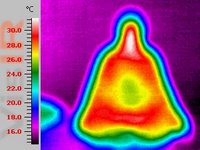Não sei qual será o resultado prático dos workshops, mas a frase seguinte faz-me mesmo querer ir e estar presente e atento em cada momento:
"A ânsia nos nossos “corações” não passa só por encontrar o amor, mas por ser capaz de amar, amar interminavelmente, e mais ainda…"
Faz este mês um ano que comecei a viver o yoga. A "chama do meu coração" estava quase totalmente extinta. Tinha esquecido o que era chorar, rir, sentir... Renasci nessa altura, a pouco e pouco, comecei a sentir... Por instantes comecei a ver coisas muito boas em mim, consciente nas posturas, nos relaxamento, energizado com os pranayamas. A ligação corpo mente, o olhar para o meu centro. A minha perspectiva do mundo, da vida, mudou muito desde então, e continua a mudar. Tornei-me meditativo e assim continuo...
O amor é o mais belo que existe em nós. Vejo todas as pessoas como frutos, na superfície há a crosta, dura, feia, resultado de muitos preconceitos incutidos. No centro encontra-se o amor. E algumas pessoas funcionam como espelhos, dão-nos diferentes perspectivas do amor que existe em nós, é como se fossem brechas na crosta. As pessoas são amor, alegria, tranquilidade, o que está à volta, à superfície, não é a pessoa, é só lixo que se acumula à volta. O objectivo da vida é aproveitar as brechas que já existem, expandi-las e deixar que o amor flua para todo o lado. Bom, isto é só uma imagem de que gosto.
Mas a interacção entre pessoas é quase sempre superficial, as crostas interagem, não os núcleos. Apertos de mão, pares de beijos. E os abraços sentidos, desarmados, onde ficam? Eu sei, sou o melhor exemplo de pouco afecto. Admiro as pessoas que se
abraçam, admiro as formigas.
Se abraço um homem ainda me olham de lado. Se é uma mulher, ainda vai parecer que estou mal intencionado, que quero ir para a cama com ela... o que, por algum motivo, grande mal lhe faria. Talvez seja este o mecanismo que nos afasta todos uns dos outros...
Talvez os workshops nos ensinem um pouco mais a encontrar mas também a soltar, a libertar, o amor. E ainda que não resulte, pelo menos estaremos a lutar pelo que mais importa na vida, e não distraídos com outra coisa qualquer.



